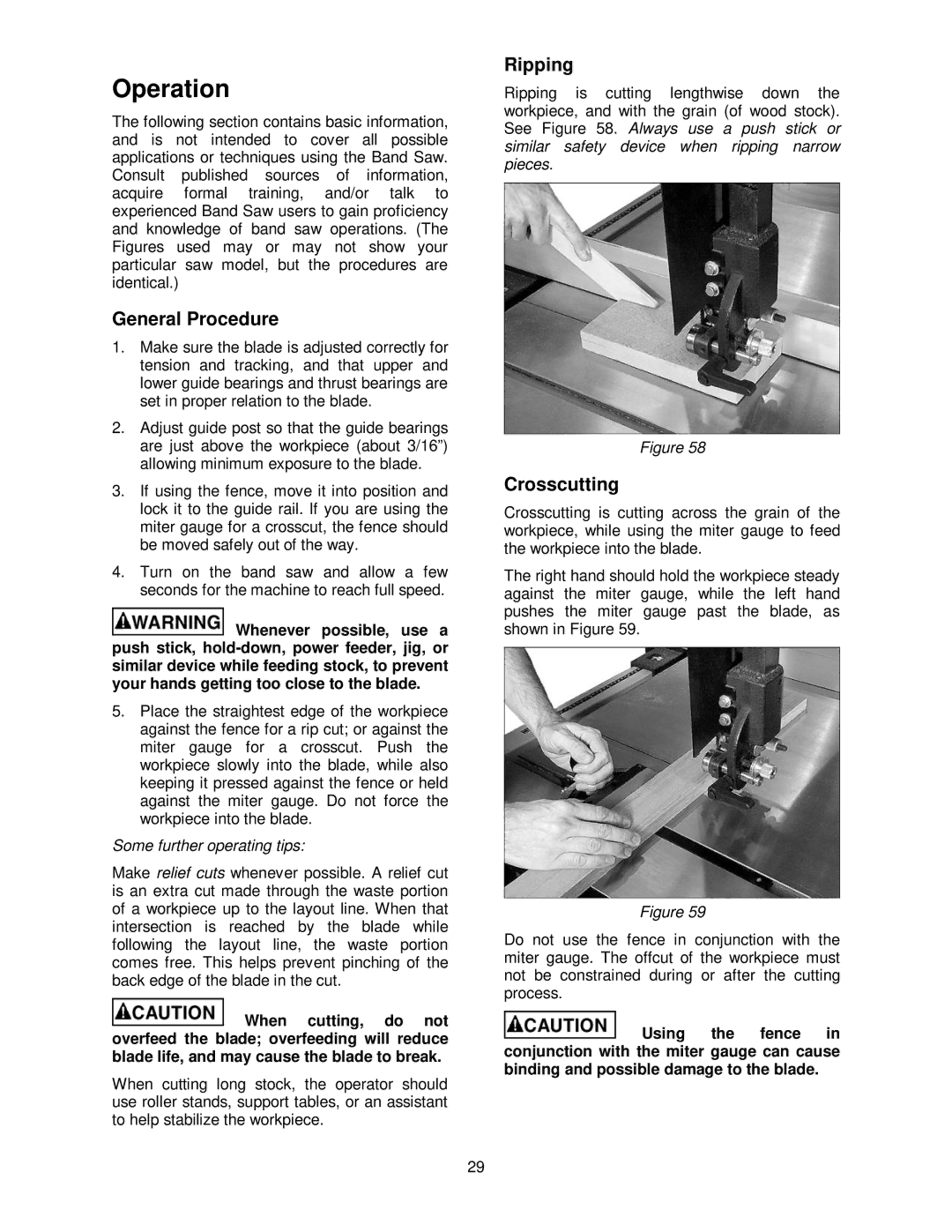
Operation
The following section contains basic information, and is not intended to cover all possible applications or techniques using the Band Saw. Consult published sources of information, acquire formal training, and/or talk to experienced Band Saw users to gain proficiency and knowledge of band saw operations. (The Figures used may or may not show your particular saw model, but the procedures are identical.)
General Procedure
1.Make sure the blade is adjusted correctly for tension and tracking, and that upper and lower guide bearings and thrust bearings are set in proper relation to the blade.
2.Adjust guide post so that the guide bearings are just above the workpiece (about 3/16”) allowing minimum exposure to the blade.
3.If using the fence, move it into position and lock it to the guide rail. If you are using the miter gauge for a crosscut, the fence should be moved safely out of the way.
4.Turn on the band saw and allow a few seconds for the machine to reach full speed.
![]() Whenever possible, use a push stick,
Whenever possible, use a push stick,
5.Place the straightest edge of the workpiece against the fence for a rip cut; or against the miter gauge for a crosscut. Push the workpiece slowly into the blade, while also keeping it pressed against the fence or held against the miter gauge. Do not force the workpiece into the blade.
Some further operating tips:
Make relief cuts whenever possible. A relief cut is an extra cut made through the waste portion of a workpiece up to the layout line. When that intersection is reached by the blade while following the layout line, the waste portion comes free. This helps prevent pinching of the back edge of the blade in the cut.
![]() When cutting, do not overfeed the blade; overfeeding will reduce blade life, and may cause the blade to break.
When cutting, do not overfeed the blade; overfeeding will reduce blade life, and may cause the blade to break.
When cutting long stock, the operator should use roller stands, support tables, or an assistant to help stabilize the workpiece.
Ripping
Ripping is cutting lengthwise down the workpiece, and with the grain (of wood stock). See Figure 58. Always use a push stick or similar safety device when ripping narrow pieces.
Figure 58
Crosscutting
Crosscutting is cutting across the grain of the workpiece, while using the miter gauge to feed the workpiece into the blade.
The right hand should hold the workpiece steady against the miter gauge, while the left hand pushes the miter gauge past the blade, as shown in Figure 59.
Figure 59
Do not use the fence in conjunction with the miter gauge. The offcut of the workpiece must not be constrained during or after the cutting process.
![]() Using the fence in conjunction with the miter gauge can cause binding and possible damage to the blade.
Using the fence in conjunction with the miter gauge can cause binding and possible damage to the blade.
29
